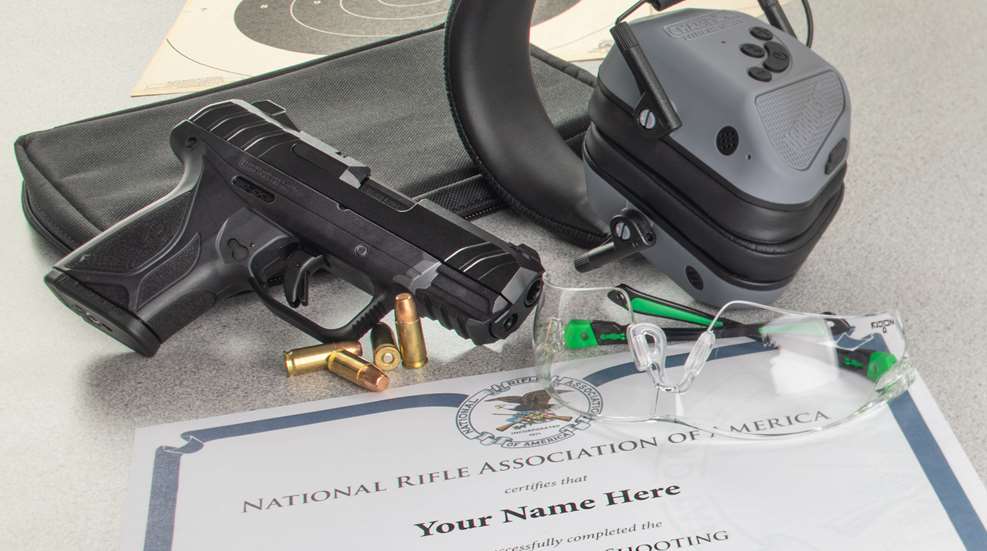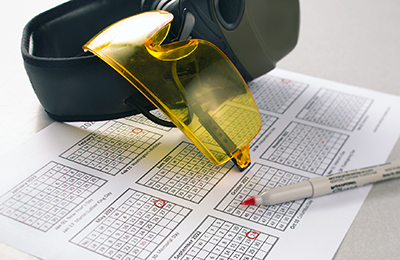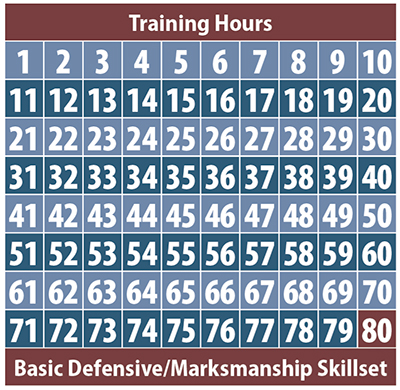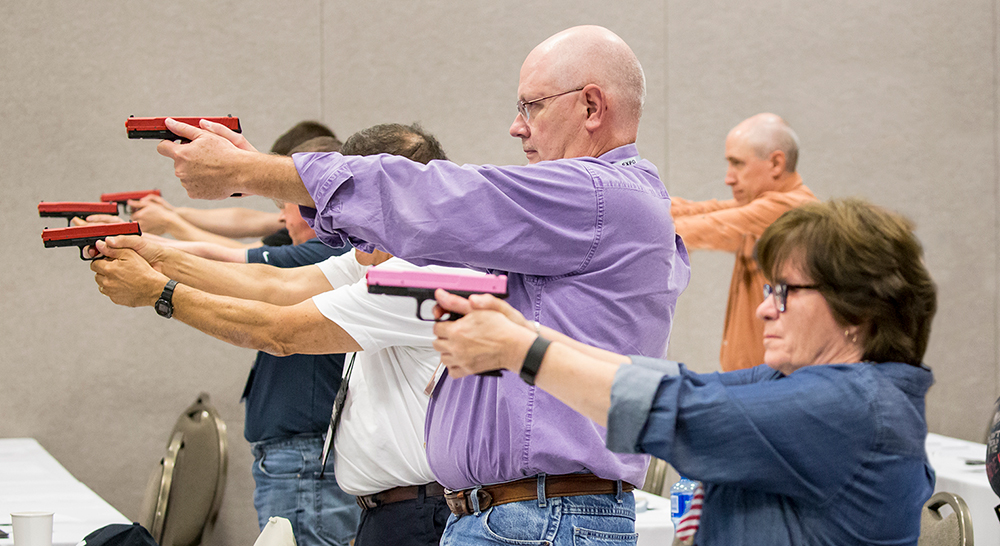
I enjoy the challenges presented when trying to master a skill. Not everyone may see the same value that I do, but the challenges provide me with problems to solve. So, I guess you could say I enjoy solving problems. Over the years I’ve tried to place something tangible within answers I provide to students’ questions about “intangibles.” A common question I get is: How long it will take before I’m “good”? I typically respond with a question of my own: How do you define “good”? When I must dive into the weeds about defining good enough, I will often break it down into three categories: initial investment, routine maintenance and future vision.
Good can mean a lot of things and at the very bottom is “good enough.” How good is good enough? To be honest I don’t think we will ever get a sufficient answer, but I do like pondering the question. The reason I enjoy this question has to do with how difficult it is to quantify the question in the first place. There are so many variables and conditions, it would be almost impossible to define. We are basically training for an unknown, unknowable event more than likely against an untrained adversary. Some will spout percentages from current events to help defend a viewpoint for or against a skill or technique. Lately, I’ve been pushing back against this mentality.

The big reason is most will use this as an excuse to do the bare minimum. I don’t know what skills or to what level they will need to be honed. What I do know is the amount of work involved, work that will span a lifetime more than likely. Imagine what you perceive to be good enough. It will probably take you longer to achieve the level you have in your head right now than you may think. Maybe that is a bit dramatic, but we tend to underestimate the challenges and overestimate our commitment. This is where some people can check out from the art of shooting. When the details of the work start to surface it may be more than the average person is willing to invest.
How long is the hard part? I believe it will take the average person an investment of 80 hours of formalized instruction to move from the beginner to basic level. I define formalized instruction as firearm-specific training, private firearm instruction, organized practice and continued education. Another way to look at the investment is attending five 16-hour firearm-training courses. If you were to squeeze in two per year, then in about 2.5 years you may have reached the basic level. Of course, some will achieve their goal sooner or with fewer hours, but this is what I have observed over the last couple of decades. The skill competency that would signal one has met the standard to advance to the next level is not too complex. Their knowledge base has increased, but it is still closely attached to practice. They tend to need close guidance on just about everything. Practicing in isolation is also necessary to develop the foundation that will lead to practical application.
Once the idea of 80 hours is digested, most will try to figure out a way to circumvent the system. This right here is another big problem and the reason it can take up to 80 hours or more. Rather than commit to a consistent training and practice program, they look for shortcuts. Again, there are no shortcuts. There is a point where it becomes somewhat easier, but that is due to your efforts. The more practice one achieves, the faster one can develop the skill. If someone were to press me on the shortcut question I might respond with consistency as an answer. If you are consistent, then maybe you can reach your goal sooner. It is when you are inconsistent that your skill level degrades. Then, you must put in more time to recoup your losses before you can reach new levels. You start to appreciate the importance of consistency.

There is an old saying, “it is easier to keep up than to catch up.” You can interpret this saying as relating to being consistent or conducting routine maintenance on your skills. In between immersion-type training, such as a 16-hour firearm course, you would want to spend some quality time on the range applying your newly learned skill to help cement it into memory. Routine practice is nothing more than a fixed interval. If you can dedicate a couple of hours each month to organized practice sessions, you will help retain the information allowing you to better apply your skills in the future.
When folks react to my comment about 80 hours there is an initial shock. I will explain the main reason it takes this long is not that you cannot learn this skill quicker if you are disciplined, but that life gets in the way. It is normal to overestimate the time it takes to accomplish a task; in fact it is so normal there is a name associated with it called planning fallacy. It is human nature to take an unrealistically best-case scenario and substitute it for your situation. Meaning, you start out overly optimistic rather than rational. It is common to overestimate the benefits and underestimate the costs. While keeping your eye on your goal is important, if you made some miscalculations in the beginning it can create frustration which can affect your commitment.
When I talk about the 80 hours of formalized instruction to achieve the basic level, it is because I have seen so many who started out only to be discouraged and either take much longer to reach their goal or give up on it entirely. By the same token, I enjoy sharing my observations of those who have advanced to the next skill level. Many of these students have successfully navigated some of the pitfalls I describe. Most adjust their initial goals, but through commitment to an 80-hour structure they achieved their goal.
I’m a big proponent of having a future vision. They are like a goal sometimes can be used interchangeably. When we look at why people fail to meet goals, there are several reasons this can happen. In my experience, there are three within the firearm-training field. It starts out by setting unrealistic or undefined goals. If you start your conversation by stating you want to be just as good as your favorite internet celebrity, then you might not have realistic goals. If you don’t know how to define successfully meeting your goal, it is almost as bad. Failing to anticipate obstacles is another big one. The 80 hours helps manage the crazy lives we all live. While it may be a goal to achieve a basic level, you may have other, more important, challenges competing for your time, talent and treasure. The last failure point for goal setting is failing to set a deadline. When I can encourage someone to shift their focus away from a timetable measured in months or years and instead focus on hours it can help manage some of the other issues described above. It helps to manage those instances where we did not plan well or maybe shifted our focus to a new job or child. The 80-hour model helps move something from the intangible to the tangible.

The 80-hour model tends to be more successful as far as achieving your goal because of the smaller chunks. With smaller chunks it is easier to stay the course. If you are only able to fit in a couple of hours per month, you have a much higher chance of success over time as you are tracking your progress and seeing results. It makes your goal more attainable by being consistent at the micro level.
My goal is success for everyone, no matter their skill level or interest. If I can further define a nebulous concept for a new shooter interested in skill-building, they are more likely to be successful. This is a difficult subject to precisely define, but over the years I have come close. If a person can understand the requirements for achieving a certain level of performance, they are more likely to succeed. It all starts with the initial investment. Everyone will move at their own pace and when you have a general idea that it will take so many hours, it takes something intangible and makes it tangible. From the initial investment the routine maintenance will begin. When folks struggle to meet their goals or see their performance deteriorate, a lot of the time it is due to a lack of some form of regular practice. Keeping an eye on the ultimate prize provides the motivation to stay the course. It gives the shooter the ability to incrementally make progress, and what might have been a lofty goal is chunked down into smaller pieces spread out over a longer duration.
Being a beginning shooter is not a bad thing. If you want to advance to basic level, I hope this provided you with some food for thought on how to achieve your goal.





































